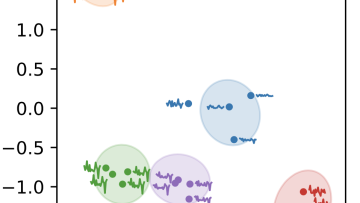11:30
Partial associativity and rough approximate groups
Abstract
Given a finite set X, is an easy exercise to show that a binary operation * from XxX to X which is injective in each variable separately, and which is also associative, makes (X,*) into a group. Hrushovski and others have asked what happens if * is only partially associative - do we still get something resembling a group? The answer is known to be yes (in a strong sense) if almost all triples satisfy the associative law. In joint work with Tim Gowers, we consider the so-called `1%' regime, in which we only have an epsilon fraction of triples satisfying the associative law. In this regime, the answer turns out to be rather more subtle, involving certain group-like structures which we call rough approximate groups. I will discuss these objects, and try to give a sense of how they arise, by describing a somewhat combinatorial interpretation of partial associativity.


